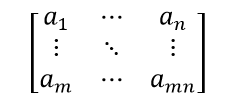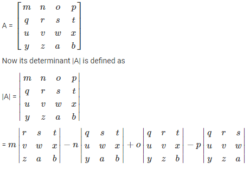Table of Contents
Matrices and determinants have a wide range of applications in real-world problems; for example, in Adobe Photoshop software, matrices are used to process linear transformations in order to render images. A square matrix is used to represent a geometric object’s linear transformation. Matrixes and their inverses are used in computer programming to encrypt messages, store data, perform queries, and as a data structure to solve algorithmic problems, among other things. In robotics, the movement of the robot is programmed using a matrices-based calculation.
In linear algebra, determinants and matrices are used to solve linear equations by applying Cramer’s rule to a set of non-homogeneous linear equations. Determinants are only computed for square matrices. If a matrix’s determinant is zero, it is said to be singular; if it is one, it is said to be unimodular. The determinant of the matrix must be nonsingular, that is, its value must be nonzero, for the system of equations to have a unique solution. In this article, we will look at the definitions of determinants and matrices, as well as different types of matrices and their properties, with examples.

Matrices Definition
Matrices are ordered rectangular arrays of numbers used to represent linear equations. A matrix consists of rows and columns. We can also perform mathematical operations on matrices such as addition, subtraction, and matrix multiplication. If the number of rows is m and the number of columns is n, the matrix is represented as a m×n matrix.

Types of Matrices
- Zero Matrix:
- Identity Matrix:
- Symmetric Matrix :
- Diagonal Matrix:
- Upper Triangular Matrix:
- Lower Triangular Matrix:
The inverse of a Matrix
In most cases, the inverse of a matrix is defined for square matrices. There is an inverse matrix for every m n square matrix. If A is the square matrix, then A-1 is the inverse of A and fulfils the following property: Where I is the Identity matrix, AA-1 = A-1A = I.
Definition of Determinant
A determinant for a square matrix can be defined in a variety of ways. The first and most straightforward method is to formulate the determinant by considering the top row elements and their corresponding minors. Multiply the first element from the top row by its minor, then subtract the product of the second element and its minor. Continue to add and subtract the product of each element of the top row with its respective minor until all of the top row elements have been considered.

Properties of determinants
- Reflection Property
- All-zero property
- Proportionality property or Repetition Property
- Switching Property
- Sum Property
- Scalar multiple Property
- Factor Property
- Triangle Property
- Invariance Property
- The determinant of Cofactor matrix








